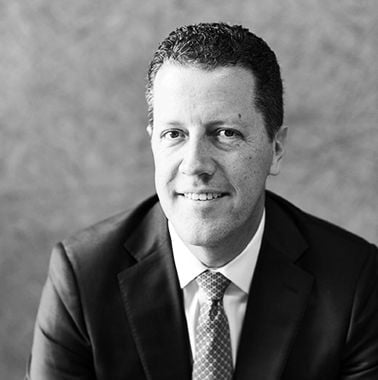See the article here.
Specialist or Generalist:
An argument for Asset Management
When I first got into the industry as an advisor, I had grand visions of being the “go-to guy” when it came to every aspect of my client’s money.
The problem was the same issue a dog has when chasing a car. One day he catches one . . .
For many advisors, we have three basic hats. The first is the technical hat – design, strategy, and research aspect of the business. The second hat is administrative – paperwork and compliance end of the business. The final and largest hat is the business’s human side -everything from client meetings to the relationship building that can help grow a practice.
Most advisors got into the business because we enjoyed the technical, but we fall in love with the human side. It is the most demanding and most rewarding side of the business. As my practice grew and the business’s human side grew to take up more and more of my week, I started to notice I had fewer and fewer hours to sit down and do the hard research and analysis on the market. If I was lucky, I was getting an hour a day of market analysis and synthesis. When I thought about the time I could devote to designing and adjusting portfolios for clients, frankly, I started to feel more like a hobbyist than a professional.
If I was going to hold up my promise to be there for the client and to be “the guy,” I quickly realized my clients needed a team. Being the lone wolf wasn’t going to work. I needed to bring in the pros. We needed professional asset management.
What is asset management?
At a high level, an asset management company does three fundamental tasks. They provide access to institutional level money managers for clients who don’t have institutional level money. Two, each investment manager or asset manager on the platform is a specialist in their market segment. Each day, their entire mission is to understand the forces affecting their area of responsibility and make the appropriate changes to fulfill the mandate they have for their specialty. Three, they provide a platform for advisors and their clients to build out a suitable or a combination of asset managers to meet their needs and goals.
While a good asset management company can help bring a larger, more specialized team to bear for a client’s investment plans, they also serve another function in the relationship. They help the advisor refocus their attention on the right spot, the client.
When the advisor is the lone wolf responsible for the design, sales, implementation, and management of the funds, it is very easy to lose objectivity.
When the client has questions about performance, it is easy to let your ego get in the way because the design is “your baby.” However, when you have this perfect Venn diagram of the advisor, asset manager, and client, each side is focused on the right areas.
The client is focused on their future and putting the funds into the system. The asset managers focus on fulfilling their mandate and managing the performance and risk in their respective areas. The advisor is focused on being the advocate for the client and the quarterback of the system.
What is the client cost of an asset manager?
There are several benefits to having professionals built into the system. However, there is no way around it. Adding an asset management company does add a layer of cost. Here is what that can look like:
In an asset management model, there are two layers, the advisor and the platform. The fees for each layer are usually a percentage of the value of the account. The fees typically vary depending on the amount of money being managed, which money managers are on the platform, and the kinds of services being offered.
In general, you could see an all-in annual percentage fee anywhere between 1% and 2.5% of the account’s value. That fee is usually broken out over the course of four quarters.
Why are the advisors paid if they are not managing the day-to-day investment choices?
The advisor’s role is to be an expert on the client, their goals, risk tolerance, and future. They are essentially the quarterback for the client’s financial plan. They help select the managers on the account and are closely watching the performance and choices the managers are making. If it is time to fire or change one of the money managers on the platform, they are typically the ones making that recommendation.
Each asset management company has its philosophy for managing money, and they have access to specific asset managers that another company may not have and their suite of services. It is not unusual to have cash at more than one asset management company. Nor is it unique to make changes from time to time as the client’s needs change, or there is an opportunity for better performance or services.
What does the asset management company do to justify its fee?
The asset management company is typically paid a percentage of the account’s value, just like the advisor. A portion of their fee goes to the “platform,” and a part goes to each account’s asset managers.
That fee can range depending on the number of assets being managed, the level of activity going on day to day in the account, and the other services provided. For example, highly customized asset managers with more active trading, margin options, and check writing privileges from the account may charge more. More passive managers using a basket of ETFs with more basic services typically charge less.
This is why there is more than one asset management company being used for a client’s assets. The advisor may use a low-cost, more passive manager for a portion of the assets and a different, more active, high feature management company for a different portion of the assets. This helps keep overall costs down and maximize the value for what you get.
How much money do you need to get access to an Asset Management company?
Like every question, it starts with “it depends,” but it may surprise you that you don’t need to be Warren Buffett to get access. Every asset management company is different, and there may be minimums before you can access individual managers within their platform.
That being said, for as little as $25,000 -50,000, you can start accessing top-quality asset management companies.
What kinds of assets can you get with an asset management company?
If your goal is to buy and sell on your own with your neighbor’s latest stock tip, using an asset manager is not for you. E-Trade, TD Ameritrade, or any number of DIY platforms can be more effective platforms for that investing. Similarly, if your mission is to buy hard assets like gold and silver, an asset management platform is not a great place to start.
The managers on a platform use the traditional suite of assets (ETFs, mutual funds, and individual positions). So, using an asset management company doesn’t necessarily give you access to any magical assets. It merely gives you access to their expertise and specialization.
What does the process look like for an average investor?
In some cases, and with enough money, you can go directly to an asset manager. However, getting access to an asset management company is usually accomplished through an advisor.
The process is simple enough, but there are a few tips that can help.
- Ensure you have a more in-depth conversation with your advisor about risk than “yeah, I am middle of the road.” In my experience, most everyone is “return tolerant,” but that does not always translate to risk tolerance. An excellent two-part question to work through is One, if next year the market is up 15%, what rate of return would make you feel like you didn’t leave money on the table. Two, if the market is down 15% next year, how much could you lose and not feel like we have failed.
- Last note on risk. When it comes to risk, don’t stop at the annual volatility number. Make sure you ask about “max loss” or what is sometimes referred to as “Max draw-down.” Volatility is a measure of the normal variability in a portfolio. This is the up or downswing two-thirds of the time in a portfolio. For example, the S&P500 typically has annual volatility of around 18%. However, from the top of the market in 2007 to the bottom of the market in 2009, the S&P500 lost over 50%. Clients who are comfortable with an 18% swing can have very different opinions about 50% swings. Ask about the black swan events and how the portfolios performed.
- Cost is only vital in the absence of value. I encourage you to talk about the fee structure and how much each party is charging. Beyond understanding the data, context also helps. To help put those fees in context, make sure the historical returns are net of fees so you can get a sense of the actual value. Once you know the fee structure, the next question boils down to whether you believe in their philosophy and approach.
The final question to ask is about the adjustment and review process.
Let the advisor know how often you want to connect to review performance. Some clients only want to hear from their advisor if WWIII starts. Others want quarterly reviews. Talking about those desires can help.
- In the same vein, also talk about the process for making adjustments to the portfolio. Is it a simple process, who initiates that conversation, and what all is involved?
Having an asset manager on your financial team may seem like something reserved for the ultra-wealthy. The reality is you can begin to add the expertise for far less in assets than you think. It requires some research. Understand the cost structure for sure and spend a fair amount of time understanding the philosophy of the advisor and the platforms they are recommending.
Getting the philosophy and approach right can give you tremendous confidence in the process and make it seem less daunting.
Registered Representative and Investment Advisor Representative of and securities offered through OneAmerica Securities, Inc., a Registered Investment Advisor, Member FINRA, SIPC. Benchmark Income Group is not an affiliate of OneAmerica Securities and is not a broker dealer or Registered Investment Advisor. Investing involves risk which includes potential loss of principal. Provided content is for overview and informational purposes only and is not intended and should not be relied upon as individualized tax, legal, fiduciary, or investment advice. Other entities referenced are not affiliates of the companies of OneAmerica unless otherwise noted.





